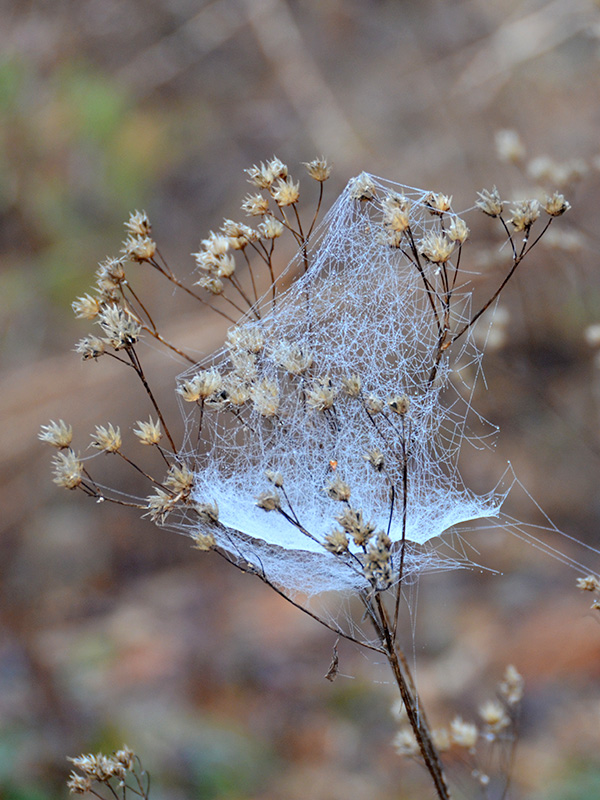
Cover is one of the “habitat basics,” but one I hadn’t thought about much before I learned about habitat gardening. I now realize how important it is to provide some protection from predators and severe weather.
Cover also includes providing a layered landscape that provides homes for even little creatures, such as spiders.
Too often the overly manicured and neatly clipped bushes — so common here in the suburbs — don’t provide much cover of any kind.
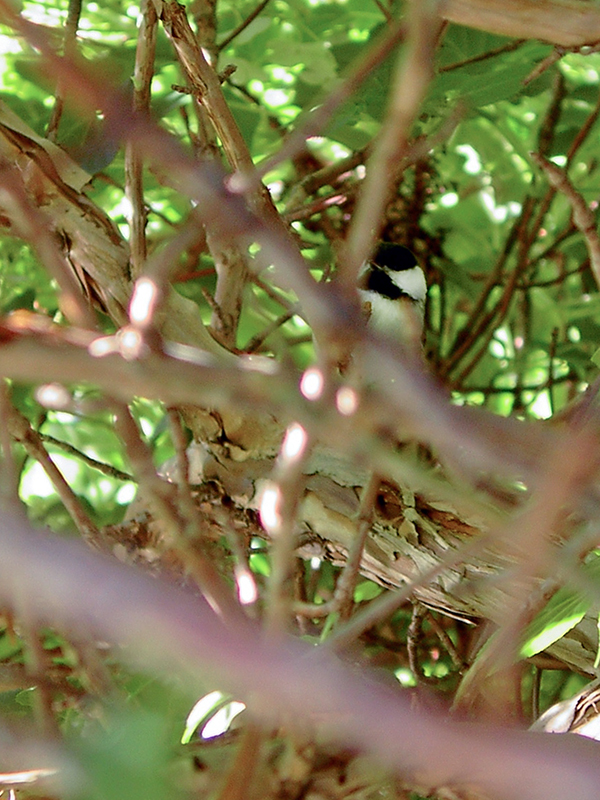
When we look at a plant, we generally see the mass of leaves on the outside of the plant, but here’s an actual “bird’s eye” view.
See the chickadee? From his point of view inside the plant, it must feel like a nice safe place to be.
I’ve always liked having LOTS of plants, so even before I created my habitat garden, I had quite a bit of cover (even though I didn’t think of it that way). Much of it, however, consisted of non-native, otherwise useless plants, such as forsythia. Some were even invasive plants, such as burning bush (Euonymous alatus). These non-native shrubs were popular spots with birds — especially house sparrows (ugh!) — but when I learned that native bushes have so many additional benefits for wildlife, I removed all of the non-native shrubs. Though they might not have spread in my own yard, they can spread to natural areas through bird droppings after birds eat the berries.
Fortunately, I happened to have some native shrubs already, so even after removing the non-natives my yard wasn’t bare. Even starting with seedling shrubs, it took just a few years to recreate a lot of cover — cover that now also provides food and nesting places.
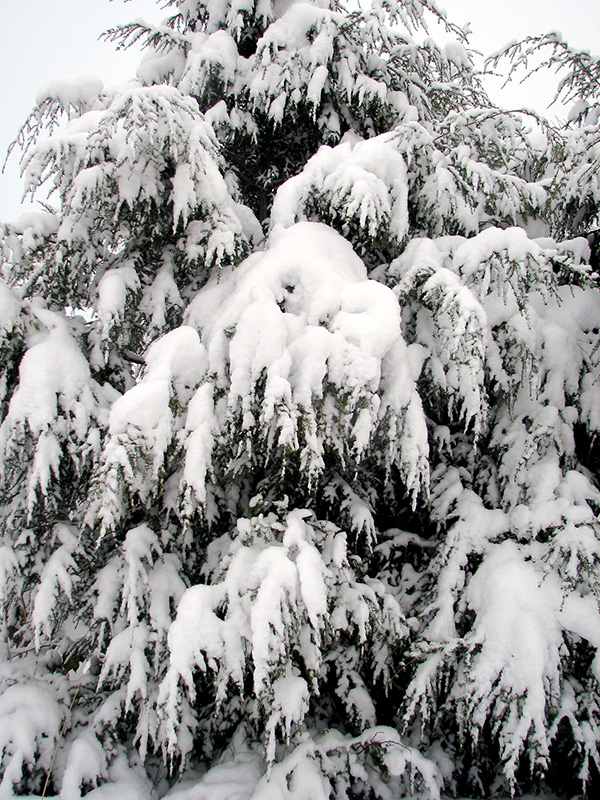
I had read that homeowners should aim to have about 10% of their property planted with evergreens for the valuable cover they provide.
I already had arborvitae (Thuja occidentalis) and an Eastern red cedar juniper (Juniperus virginiana), but I added some more arborvitae, another red cedar, and three Canadian hemlocks (Tsuga canadensis).
Junipers need full sun and hemlocks do well in the shade, so I’ve been able to provide cover in a variety of locations.
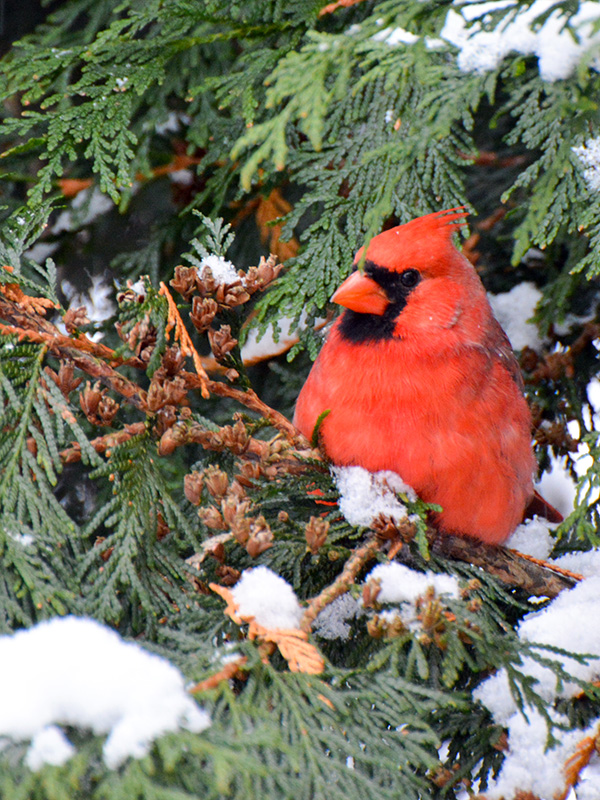
We especially need cover in our cold Central New York winter. I enjoy seeing chickadees and other birds sitting in the evergreens on a cold winter day. I’ve read that the temperature inside a snow-covered evergreen is significantly higher than the “outside” temperature — that is, the temperature outside the bush. And those few degrees can make the difference between surviving a cold winter night or not.
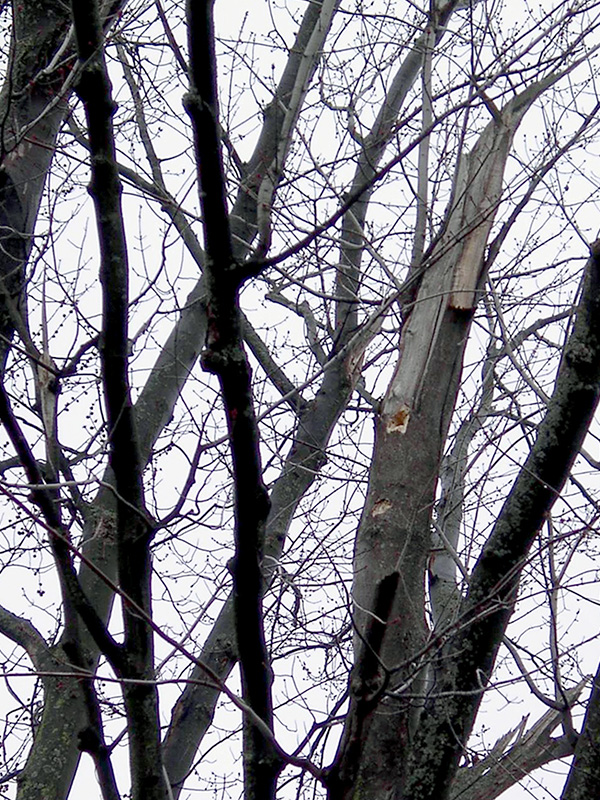
Cavities in dead trees, such as this snag I spotted on a walk, are another important source of cover (in addition to being nesting spaces in the summer).
I don’t have any dead trees large enough to have a cavity, but if and when our sugar maple (Acer saccharum) dies, we’re going to have it cut to the tallest height that’s safe and plant trumpet vines (Campsis radicans) at its base. That should make a green totem with space for cavities, while still being safe for people.
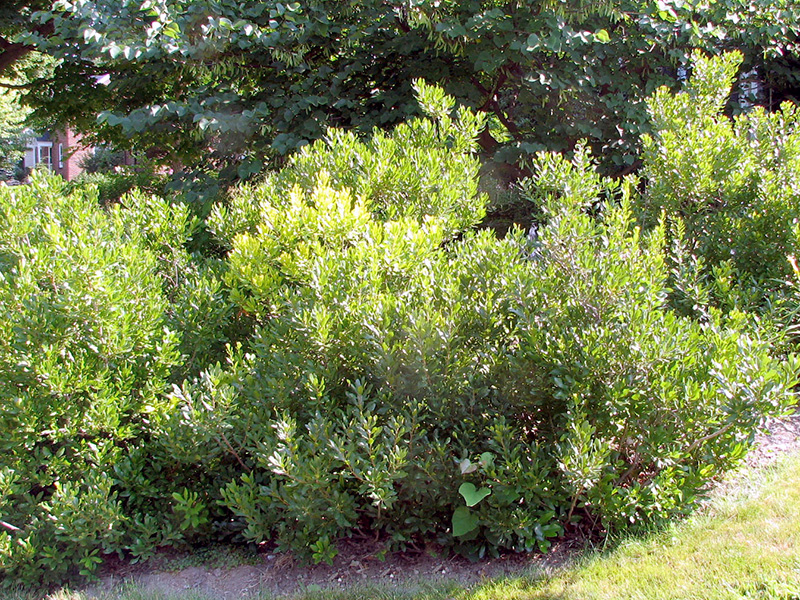
These are all but one of the male bayberries (Myrica pensylvanica) that I mistakenly purchased, not knowing that I was getting so many males. Since they can’t provide berries, they can at least provide cover.
We left them a number of years since they’re quite attractive anyway, but when they got larger, we removed them in favor of some other plants. (We still have male bayberries elsewhere in the yard to pollinate the females.)
Other plants in my yard that provide cover at least in the summer are pagoda dogwood (Cornus alternifolia), winterberry holly (Ilex verticillata), as well as taller trees such as the sugar maple (Acer saccharum) and a black cherry (Prunus serotina). And for smaller creatures, even native grasses and other herbaceous plants provide cover.
Other functions
After observing creatures in our yard, I realized that cover can be more than just a place to be safe from predators or severe weather.
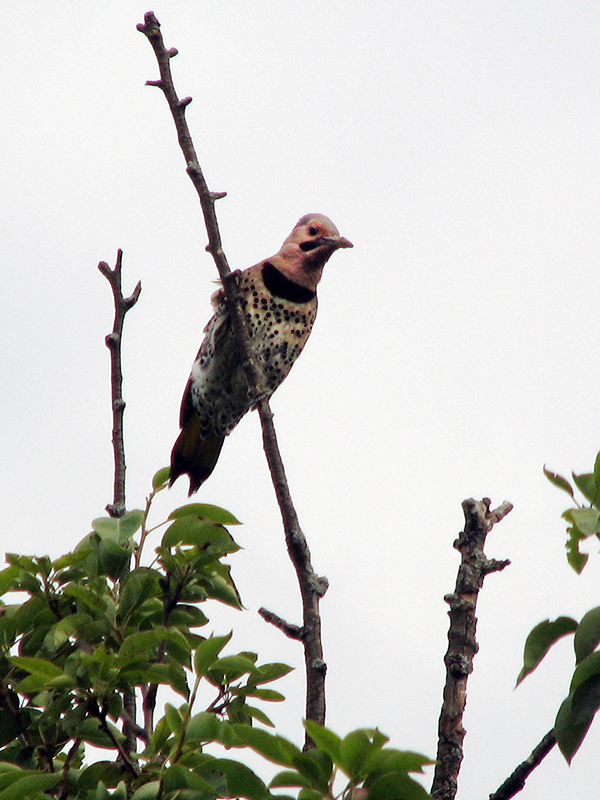
Cover can include places to perch, to declare territory, or just to sit.
Ironically, these are often old dead branches that we’d otherwise be tempted to prune out. We still cut out diseased branches, but we leave most of this “deadwood” around for perching as long as it doesn’t endanger people (and generally it doesn’t if it’s far enough from roads or sidewalks).
I leave most flower stalks through the winter. It’s easy enough to break them off in the spring and compost them either in place or in a compost heap.

One particular year, though, I had missed a cutting back an old flower stalk from the previous year. This dragonfly adopted this as his perch for surveying his territory. He used it for quite a while.
For that dragonfly that summer, this old stalk was an important part of our habitat garden.
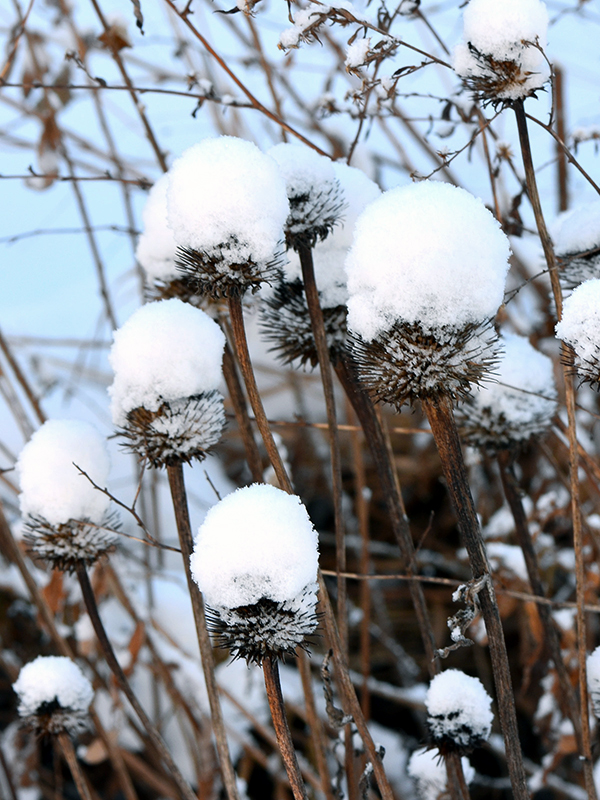
Cover is also a place to overwinter, an important need for insects, including some butterflies. This may contradict the unspoken suburban “rule” to clean up the garden in the fall, but as Eric Grissell says (see Resources below), if you don’t leave a place for the “bad” things to overwinter, you’re also not leaving a place for the “good” things to overwinter. And birds can use these overwintering insects as food, as well as the seeds themselves.
Man-made cover
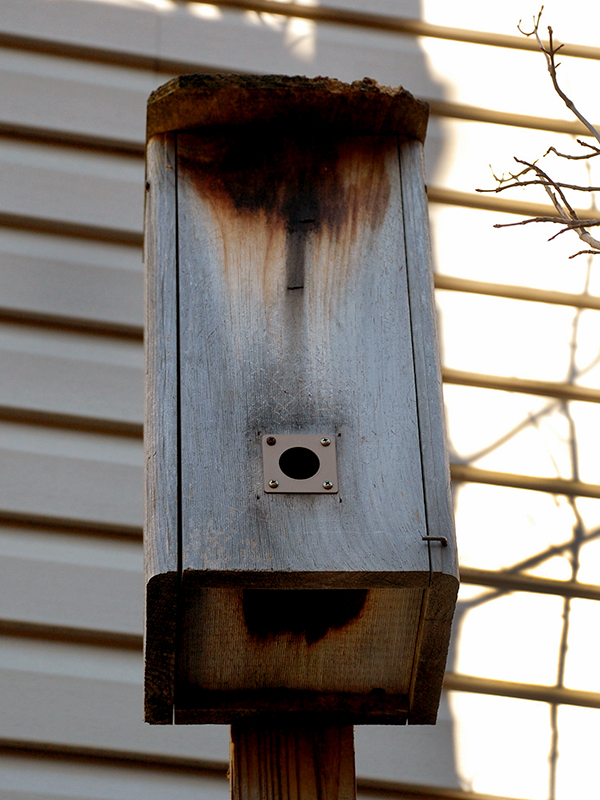
We’ve tried providing some man-made cover, but generally it seems to be a poor substitute for the real thing: natural spaces creatures have used for millennia. We’ve put relatively more effort into providing these natural features, but we did purchase a roost box many years ago. Note that the entrance hole is at the bottom, unlike nest boxes. Inside there are perches staggered along the side. The idea is that a small flock of birds can crowd into this space to share their warmth.
In nature, of course, they’d use tree cavities, but they’re in short supply here in the suburbs (and even in our parks and other natural areas as we continue to “neaten” things according to human ideas of what is aesthetically pleasing).
I have no idea whether any birds have used the roost box since it’s at the side of the house we can’t easily see. We also installed it on a fairly tall post and haven’t been able to get it down — a problem, since it should be cleaned. Whether or not this is a useful addition to our habitat, I’m not sure. I probably wouldn’t get another one.
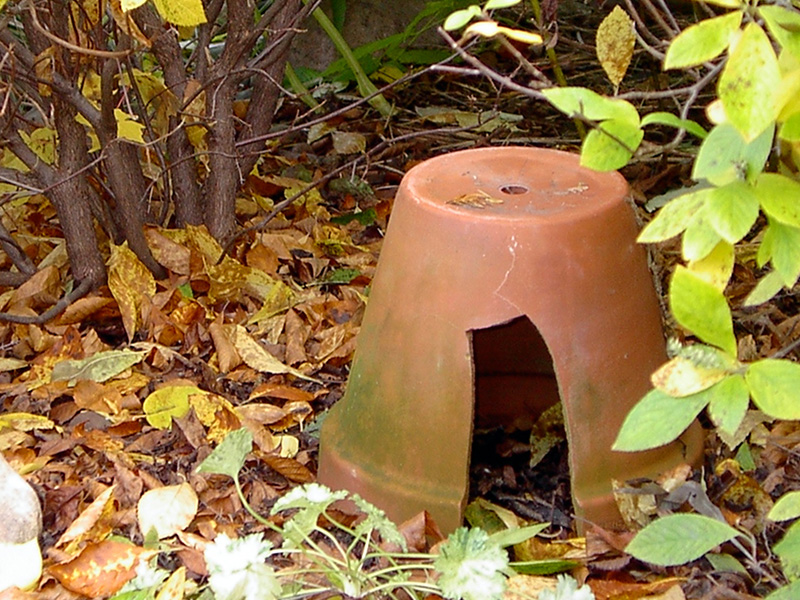
This toad abode is supposed to provide cover for toads. I doubt that in our habitat-rich yard any of our toads have ever felt a need to use it, but I like it anyway just because it’s cute.
If a yard were mainly turf grass, I suppose it might be used. In fact, this toad abode might be used more if I semi-buried it so the opening was a little smaller.
All in all, though, I’ve found again and again that recreating a natural area as much as possible is better than any man-made item I can provide. Of course, sometimes it’s necessary, such as providing bird houses until we have more snags for nesting in our communities.
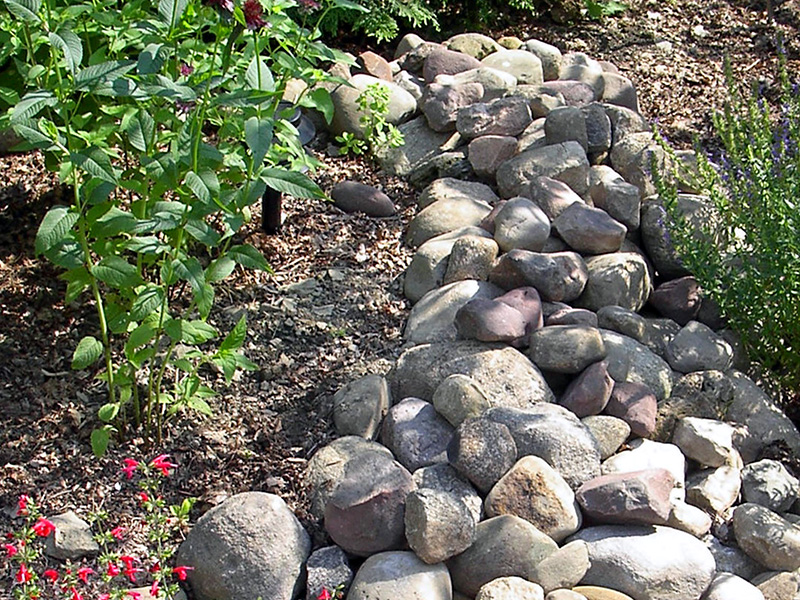
Some creatures use stone walls as habitat. We have a small stone wall using stones left over from building the pond. It’s probably big enough for chipmunks, spiders and other very small creatures.
Resources
- Choose Natives:
- Audubon:
- Sierra Club:
- The Humane Gardener:
- Life in the places in between – the importance of structure and hiding places
Reflections
A lot of emphasis is placed on mulching, especially as a form of moisture retention in warm, dry times and winter protection in cold times. Little is said about the positive role that mulches play in providing a home for insects. Nor is much credit given to organic debris and thatch as refuges for insects. Instead, we are ordered to rake up and destroy all unsightly materials such as dead and fallen stems and leaves, spent flowers, grass clippings, and the ordinary bits and pieces of a garden’s life. All the garden books tell us to do this so that “bad things” won’t have a place to hide or to overwinter and reinfest your garden in the spring. Well, as I have explained, if bad things don’t have a place to hide, neither do good things because they are often hiding inside the bad things. You cannot have it both ways. It is best to keep everything that the garden produces in the garden for as long as possible. It’s the greedy gardeners who survive the test of time.
~ Eric Grissell, Insects and Gardens: In Pursuit of a Garden Ecology
The perfectly manicured garden may appeal to a certain idea of esthetics but it is a monstrosity from the ecological point of view. Some of us need to readjust the way we view a garden. There is great beauty in the mechanism of how an ecosystem works. I relish this beauty so I find it easy to accept the visual impact of an “untidy” garden in need of some raking, re-sodding, log removal, leaf litter removal, etc.
~ Beatriz Moisset, Pollinators and the garden in winter
